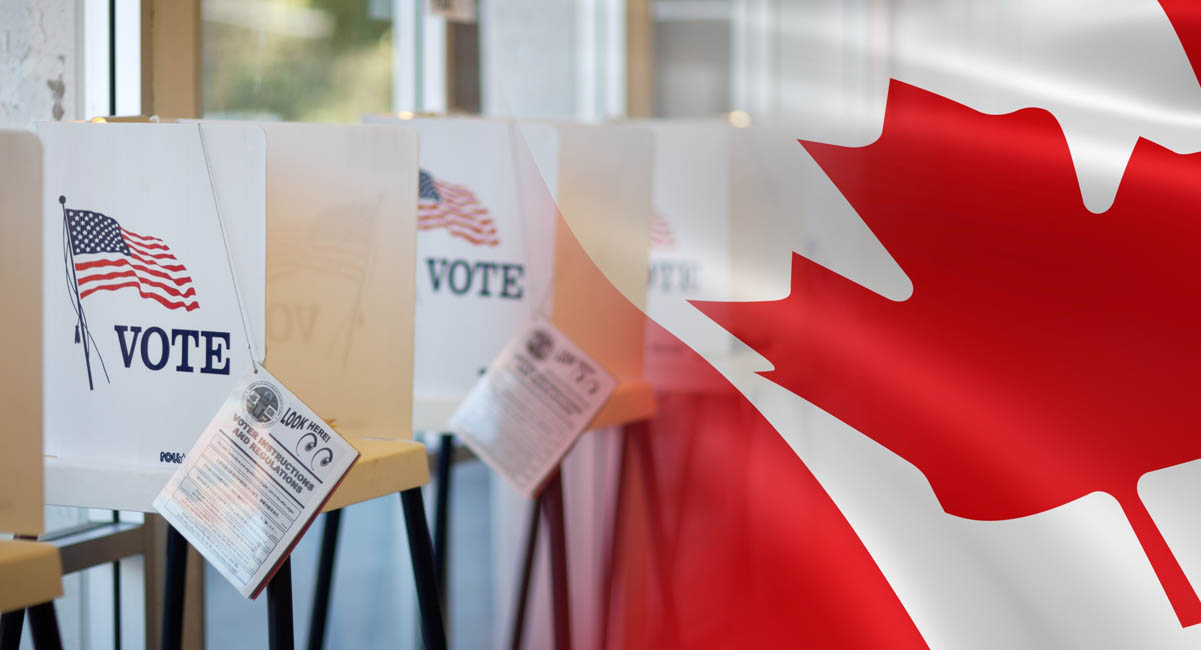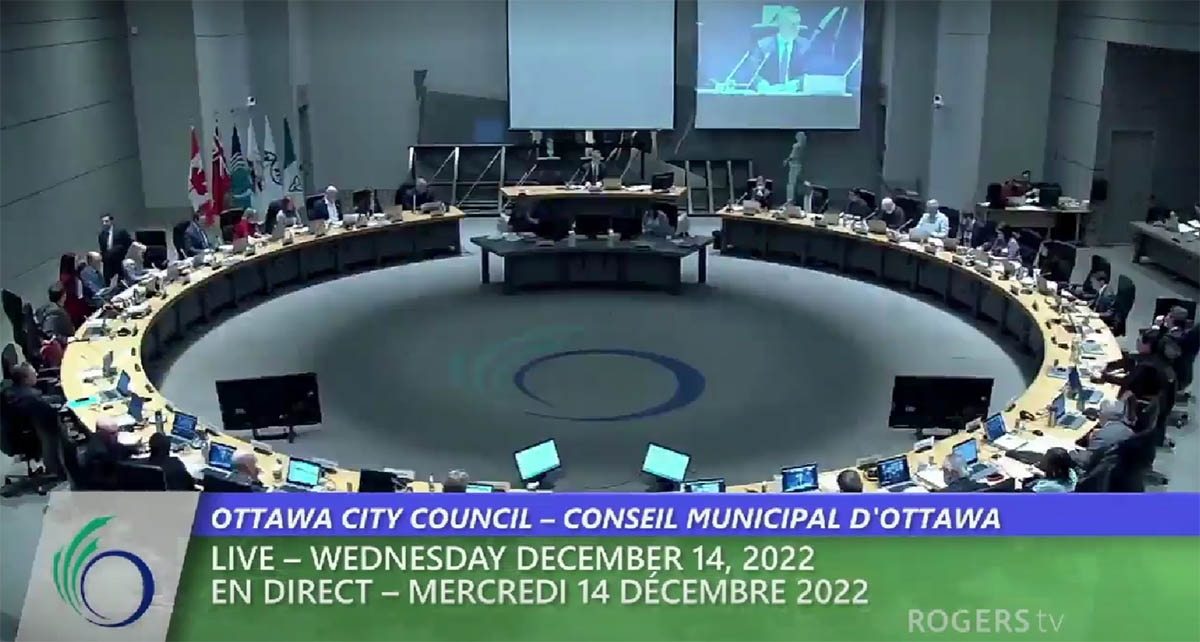
Fixing American Democracy – An Outsider’s View
Most Canadians have conflicting emotions about the political situation in our powerful neighbour to our immediate south. Smugness and alarm engage in an ongoing tug-of-war in our brains and our guts as we watch the politics of the United States of America become increasingly fractious, dysfunctional, and, to a not insignificant extent, undemocratic.
It has become customary to allege that the situation cannot be remedied because the constitutional arrangements in the United States are, by now, almost impossible to amend, as they have become a religion for secular times. But they are utterly unsuited to the 21st century, having been designed for a much smaller, simpler entity in the late 18th century.
There is some truth to this view. The structure is cumbersome and complex beyond belief.
The Founding Fathers wanted to create a system where it was nearly, but not quite impossible, to get something done from the centre. This appealed to them because most of them held to the view that they had just finished fighting a seven-year-long war against over-government, and in the slower-moving times of the 18th century, a structure where all the balanced parts might eventually agree on something was all they really needed at the centre. Most of the immediate decisions could be made at the level of state or local government. In modern times, when coordinated and speedy action has often been needed, even the most skilled presidents could only make the peculiar and delicately balanced system work with a modest degree of urgency and coherence.
However, a more careful examination reveals that many of the most problematic features of current US politics could be considerably improved with reforms that do not require constitutional amendment. I will give five examples, two of which could be implemented without any legislation whatsoever and three of which would require legislation, with much of it at the state level, but would not require tampering with the constitution. These examples are not exhaustive but do touch on some of the biggest contemporary causes of mayhem.
1. An example of a problem with presidential primaries, and its cure.
My first example relates to the American system of primary elections, especially those used to determine who a given party will select as their presidential candidate. The primary system does not date back to the beginnings of the republic. Its first tentative use, for selecting candidates for lower offices, was in the 1890’s, and it did not become the standard for selecting a presidential candidate until after 1968. The rules for primaries are not determined by legislation, but are entirely the purview of the political parties themselves, and, as the political parties are essentially private clubs, they can set whatever rules and procedures suit them.
Most (but not all) presidential primaries restrict voting to members of the party holding the primary, though in many cases that adherence may be solemnified at the same time as the voting takes place. The primary is to select the delegates to the nominating convention, and therein lies a problem for the Republican party. The majority of Republican Party presidential primaries are winner-takes-all. Thus, in an election among the party faithful in a given state, the only way for a Republican candidate to win the required greater than 50 percent of the votes of party members of that state is to take a very extreme position. Then, if perchance, that person does get the nomination as the party’s presidential candidate, there needs to be a mad dash back towards a more middle-ground stance to have any chance of attracting the uncommitted vote. This abrupt apparent change of views is guaranteed to make any candidate look fickle and insincere, giving the whole process an air of disingenuousness and manipulation at best, and corruption at worst.
The Democratic Party is somewhat more fortunate, as it has recently decreed that all its state presidential primaries assign delegates pro-rata, based upon the proportion of the primary votes garnered by each candidate. This means that candidates who risk getting fewer than 50 percent of the votes of party members in a primary in a given state do not need to alter their platform or views just to eke out a few more percent to get to 50 percent plus one. They can just hold fast with their principles and platform and accept that they might get a slightly lower number of delegates in that particular state, while being able to maintain consistency throughout the process.
To make a Canadian analogy, a state-wide winner-takes-all primary would be somewhat analogous to having a general election in which each province was a single riding. It would never sell here. The Republican Party in the United States would be wise to reform its flawed primary system. Until it does, that peculiar rule set will continue to make its eventual nominees sound like liars, even if, perchance, they happen not to be.
2. The bizarre timing for selecting party leaders, and its cure.
In most democracies, leaders of political parties are chosen well before any anticipated general election. This gives them time to become more widely known, build their brand, and develop coherent and attractive platforms on which to run in a general election. Conventions and/or ballots to select party leaders are usually held whenever the membership of a political party wants a leadership review, or when a leader wishes to retire. While unusual circumstances can cause this to happen close to an election, that is not the norm.
However, in the United States, both the Democratic and Republican parties have opted to choose their party leader mere moments before the vote in a general election held every four years. This is utter folly, for many reasons, but three reasons stand out.
First, this process militates against a party picking a talented but not yet widely know person as leader, because insufficient time remains for them to become widely known and appreciated between their selection and the general election, or for them to put their stamp upon the party by building a new platform and creating consensus and enthusiasm before the election takes place. It is unsurprising, then, that the two main political parties in the Untied States continue to be led by geriatric figures with name recognition, because the process does not provide much of an on-ramp for new talent.
Secondly, because there has been insufficient time between leader selection and the election to build and refine a real platform, it guarantees that the election will be fought with catchphrases and one-liners devoid of real analysis of what policies the country may need. Sloganeering replaces actual debate, as the parties show their contempt for the voters.
Thirdly, after each presidential election, the major party candidate who has been defeated automatically continues as party leader for the subsequent 3.7 years (unless they conveniently drop dead), guaranteeing that the party cannot go through any serious process of renewal or reform during that long hiatus. The dead hand of the past electoral failure thus pollutes every public stance of that party at the national level for most of that long post-election tail of 3.7 years.
In virtually every other democracy, a defeat in a general election is a potent trigger for an immediate review of leadership. That review does not always result in a change of leadership, but that is the outcome in the vast majority of cases. The new leader selected after an electoral defeat is also not guaranteed to be the one who leads the party into the subsequent general election. The party will watch as the new leader builds the brand and the team, and, if satisfied, will leave the leader in place to contest the next general election. Occasionally (but infrequently), new leaders stumble, and can be replaced again, if necessary, before the next election takes place.
The two main political parties in the United States could easily, if they wished, move to a more open system of allowing the party membership to trigger a leadership review whenever they deem it necessary. No legislation would be required to do this, as the processes belong entirely to the parties themselves.
3. Some votes weigh vastly more than others, but there is a partial cure.
In Canada we understand that not all constituencies can contain the same number of voters, because of issues of geographic representation. But other than the four vast northern electoral districts, the geography of which makes serving the constituents a huge job for the MP, and the four on Prince Edward Island guaranteed at Confederation, the remaining 330 ridings, including both rural and urban, vary in population less than one might think, with the least populated having more than half the number of voters as the most populated. This ratio of less than 2:1 is a goal of each exercise in redistribution.
The United States is not so fortunate. Its most powerful elected assembly is the US senate, with each state electing two members. Consequently, a vote cast in an election for the US senate cast in the state of Wyoming has the same weight as 68 votes cast in the state of California. The ratio is not quite so extreme in voting for a US president (which in fact is voting to choose electors for the Electoral College). In that case, a vote in Wyoming carries the same weight as 3.8 votes in California. That is because each state has the same number of votes in the Electoral College as its total of both senators and members of the House of Representatives.
These ratios of 68:1 and 3.8:1 are not indicative of a healthy democracy, and no issue of geographical representation can realistically be spun to justify such ratios.
Most Americans think that this arrangement is fixed by the US Constitution. And indeed, the allocation of two senate seats per state is effectively unchangeable. But there is a potential partial curative. The trick is that no amendment to the Constitution is required to admit additional states. Indeed, two were admitted in 1959, being Alaska and Hawaii. Furthermore, states have split in the past. Maine was once part of Massachusetts.
There is already a movement in California to split the state into three states, being Northern California, Central California, and Southern California. This has a certain logic, as these areas of the state do have distinct and separate interests. And they would still be large states in terms of population, well above the US average. If this came to pass, each of the three states would have two senators, and the noxious ratio of 68:1 in voter impact when selecting a senator, compared to Wyoming, would become a much more palatable, but still not comfortably democratic 22.6:1. The ratio for voter impact when voting for a president would fall from 3.8:1 to a modestly improved 3.5:1.
This example shows that if the most populous states in the US were accorded the opportunity to split, there would be non-trivial gains in fairness of representation. This would require legislation at both the state and federal level, but would not require constitutional amendment. It is worth noting that, of the 50 current states, 10 have populations exceeding 10 million each, and 10 have populations of 1.4 million or less.
4. Making the Electoral College a bit more representative.
A peculiarity of the US system is that their President is not elected by popular vote of the people, but by a body called the Electoral College, with 538 members, which is created once every four years for the sole purpose of electing a president. Each state has a number of members of the Electoral College equal to that state’s total of members of both the senate and the house of representatives. Those 538 electors are, in theory, bound by the decisions of the voters in their home states.
Like almost every other outsider watching the results pour in the evening after an election for the President of the United States, I had imagined that it was some kind of inviolable rule that the election was decided state by state, with the entirety of the Electoral College votes of any given state going to whichever candidate won the popular vote in that state. And I had assumed, incorrectly, that such a system was rooted in founding documents. That turns out to be false. Not only has the system varied considerably over more than two centuries, but two states decided, not that long ago, to do it differently. And, yes, these kinds of choices remain within the power of individual states.
Maine, with four electoral votes, and Nebraska, with five, are the exceptions. In Maine, the statewide popular vote determines who gets two of their four Electoral College votes, and the remaining two are determined by pluralities in each of their two House of Representatives electoral districts. In Nebraska, the same methodology is used, but Nebraska has three seats in the House of Representatives, so three of their five Electoral College votes are determined on the basis of district results rather than statewide results. Maine started doing this in 1972, and Nebraska followed in 1996. Split Electoral College votes occurred in 2016 and 2020 in Maine, and in 2008 and 2020 in Nebraska.
If some larger states opted for this method, the election for the president would be less capricious, as it would be less likely that a handful of votes in a large state would shift a vast number of Electoral College votes from one candidate to another. Modelling also suggests that such a change would cause Electoral College votes to more closely follow the nationwide popular vote, though this convergence would be only partial.
Individual state legislatures could easily institute this change, if they actually gave a damn about democracy and could set hyper-partisanship aside for a moment.
5. Forcing the Electoral College to echo the real decision of the voters.
At present, the process of the election of a President of the United States does not entirely accurately reflect the will of the voters. The structure of the Electoral College and the state rules for interpreting the vote in each state are the cause of this mismatch. The current geographical distribution of the concentrations of voting strength for the two parties, mapped against the structural infelicities of the Electoral College results in a built-in bias, so that a Republican could win the presidency with up to 3-4 million votes less than his or her opponent, but a Democrat would need at least 4-5 million votes more than a Republican opponent to win.
In the 2016 election, Trump got almost 2.9 million votes less than Clinton, but still garnered 56.5 percent of the 538 Electoral College votes. In 2020, Biden got more that 7 million votes more than Trump, and received 56.9% of the Electoral College vote, almost exactly the same percentage as Trump got four years earlier. Thus, there was an asymmetry of almost 10 million votes when comparing the two contests in which the winners got essentially the same fraction of the Electoral College vote.
The reform possibility explored in section 4 above would likely correct a modest portion of this asymmetry, but probably not even half.
Given that the Electoral College will very likely never be abolished, a movement called the National Popular Vote Interstate Compact (NPVIC) was been launched in the United States in 2006. The central concept of that movement is that the Electoral College could easily be made into an instrument of the popular will if a sufficient number of states passed an act requiring its members of the Electoral College to cast their votes for whichever candidate won the popular vote in the country as a whole. The movement then began to campaign to persuade states to pass such an act, with the additional proviso that the new rule would not come into effect until states representing a total of at least 270 Electoral College votes had passed such an act.
At first glance, one might well have assumed that such a project would have a snowball’s chance in hell of succeeding. But surprisingly, the movement has mounted excellent arguments against all the criticisms of its central proposal, and has seen some success. At this point 16 states plus the District of Columbia (DC) have passed and signed such legislation, and they total 205 Electoral College votes. In another six states, totalling a further 68 Electoral College votes, the proposal has been passed by one chamber. The 270-vote threshold at which the acts all come into force may indeed be reachable, at which point the Electoral College becomes simply a vestigial pass-through, because any candidate for president who won the national popular vote would be guaranteed election.
In any comprehensive reform process, the fourth proposal above would likely be superseded by the more comprehensive fifth proposal. Furthermore, the above examples of potentially achievable reform would not constitute a complete fix of the problems which have led to the United States of America being classed as a “flawed democracy” by the Democracy Index, an annual compilation done by the research division of the Economist Group, which also publishes The Economist weekly newspaper. In the most recent tabulation, the US score was 7.85. (To reinforce Canadian smugness, Canada scored 8.88 and was classed as a “full democracy”.)
However, should such reforms be implemented, it would be real and tangible progress. Of course, additional possible routes forward exist. The use of independent neutral commissions for the periodic redrawing of the boundaries of electoral districts would gradually eliminate a century and a half of flagrant gerrymandering, much of which was originally done for racist reasons. A tempering of the “Citizens United” decision which effectively removed all limits on election spending would also go a long way to levelling the playing field by making it harder to “buy” an election.
But the five reforms enumerated above seemed to an outsider like me to be the ones with the best chance of garnering wide support. And I wish the various groups of reform-minded citizens of our neighbour to the south the very best of luck in trying to get them implemented.
Photo: iStock










